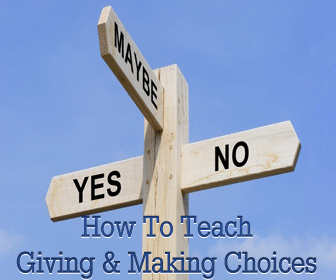Trick or Treat: How to Teach Giving and Making Choices

![M: Magical Mystery Tour [Teacher Tips from A to Z]](https://m.busyteacher.org/uploads/posts/2011-07/1311815781_magic.png)
Your students will be amazed when they bring a little magic into their own lives and English lessons.
Invisible Ink
What do you get when you combine a science experiment with a speaking activity? Invisible ink, of course. This is a simple experiment with just a few necessary materials. All you need is some lemon juice, water, cotton swabs and paper. Explain to your students that fruit juices contain carbon compounds (molecules made with carbon and other elements). When those compounds are heated, they break down and the carbon separates from the other elements. When it does, its natural, dark color comes out. Allow your students to make a mixture of lemon juice and water and use a cotton swab to write a secret message on the paper. It will be invisible. They can then exchange messages and hold them up to a light bulb. The heat from the light bulb will break down the carbon compounds, and the ink will become darker. They can now read the secret message.
Group your students together for some discussion time after the experiment. Have them discuss what they think would happen if they use more water in their ink or more lemon juice in their ink. Allow them to work together to discover the perfect formula for invisible ink and then make a recommendation to the class as to the perfect formula.
A Magic Lantern
Do your students know the story of Aladdin and the magic lantern? Start this exercise by reading them the story or showing them part of the popular movie. Make sure you include the part where the genie offers Aladdin three wishes. Group your students together to discuss what wishes they would make if they had three wishes. This is a good time to use the conditional tense. “I would wish for riches. I would wish for fame. I would wish for love.” Once all your students have decided on their wishes, ask them this question. What could go wrong with that wish if the genie were a trickster? Then give them some more discussion time to talk about the consequences of having wishes granted and see if they would change their wishes at all.
After students have discussed their wishes, have them write about those wishes. You may want your students to write a paragraph on each wish or just a few sentences depending on their age and language level. Either way, they should write what their wish is, why they would wish for it and what the results of that wish would be. Are they wishing for themselves or someone else? You can also set up a wishing “wall” where your students can post their compositions or other wishes they make later. You can keep a supply of sticky notes handy so they can add their wishes as they come up with them. You may want to have a student read one wish each day and have the class try to determine whose wish it was.
A Magician’s Secrets
A lesson on magic is the perfect time to have a local magician visit your classroom and do some tricks for your students. A professional would be nice, but even an amateur can be a good presenter to your ESL class. Ask the magician to do some tricks for your students. As they watch, they should try to figure out how the magician performs his tricks. Have your students discuss in groups what they think the magician’s secrets are. After some discussion time, bring the class together to ask the magician if they are correct. “Did you already have a rabbit in your hat? Did you put the coin between your fingers?” They should listen carefully as the magician either confirms or denies their solutions and then shows them how he performs some of his tricks. Then challenge your students to do their own magic tricks. Have groups of students do some research on magic tricks, and then give each group some time to perform in class. They may or may not reveal the secrets behind their tricks to the class after their performance.
If you do not have access to a local magician, you can also use video from the well-known magicians Penn and Teller. They have a reputation for explaining magic tricks and taking down the veil of mystery. Simply show your students the beginning where they perform the various magic tricks, give your students time for discussion, and then play the rest of the clip where they explain the trick. Your students will still get practice with making predictions and critical thinking though Penn and Teller’s tricks will most likely be far more complicated than those of a live magician.
Visit Harry
The most well known magician in the world today just may be Harry Potter of J.K. Rowling’s books. If you have time, view one of the Harry Potter movies in class or on a field trip. Since Harry attends a school for magic, you can have your students compare his educational experiences with their own. Show your students how to create a Venn diagram to get their ideas on paper. Then either have them discuss the similarities and differences of Harry’s education to theirs or have your students write about them. You can also have your students compare Harry’s friends to their own or ask them what they would do if they were Harry in his dangerous situations.
They will have fun practicing their listening, speaking and writing skills as they explore the mysterious world of magic.